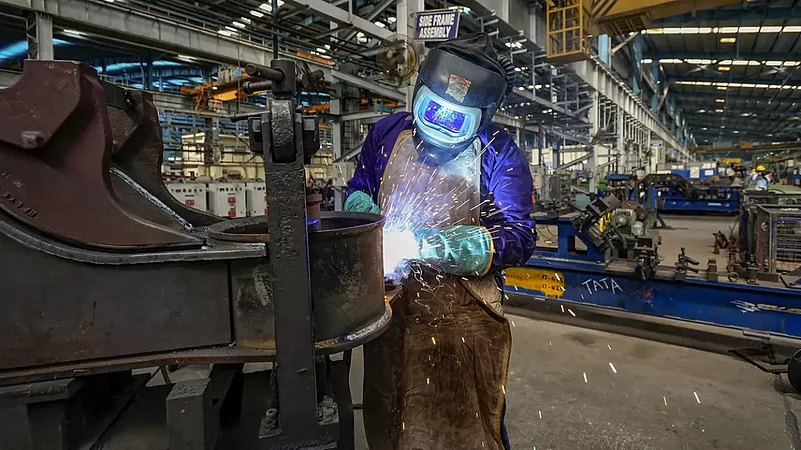The aggressive manufacturing push, especially in the electronics space, driven partly by the reconfiguration of China-centric regional supply chains, can add 50-100 bps to the GDP annually till 2030, according to a foreign brokerage.
According to Tanvee Gupta-Jain, the chief economist at UBS Securities India, if the country continues to benefit from the ongoing China+1 supply chain shifts and the ongoing structural reforms, GDP can rise to 6.25-6.75 per cent annually or adding 50 bps till 2030 under an optimistic scenario.
In the most optimistic scenario, which she calls a blue-sky scenario, GDP growth is likely to be 6.75-7.25 per cent or adding 100 bps to the current rate. The boost to direct job creation could be 1-4 million per annum (with a similar indirect impact as well).
Advertisement
According to Gupta-Jain, the present manufacturing push under the various PLI (production-linked incentive) schemes, particularly for electronics, will yield the best benefits when the country develops a complete ecosystem for local sourcing of components, which are getting imported.
It was erroneously reported quoting the analyst that the manufacturing push is unlikely to yield tangible results for growth in the near term.
She mentioned that "UBS IT hardware team expects production in India to not only meet domestic demand for Apple products but in time ultimately account for upwards of 20-25 per cent of iPhone production from the current 6-7 per cent of total production," during a conference call on Thursday.
Advertisement
On the overall growth for this fiscal, the brokerage firm has retained its previous forecast of 6.2 per cent, which is 10 basis points higher than the consensus average and 40 basis points lower than the Reserve Bank forecast.
Even as growth momentum is holding despite the uneven underlying recovery, UBS' India composite economic indicator rose 4.4 per cent sequentially in the June quarter against 3 per cent in the previous quarter.
Gupta-Jain said that she expects the rupee to average 82-83 against the US dollar till December and then gradually rise to 79 by March, depending on the RBI if it allows the local unit to strengthen before the elections.
On the market, she said according to UBS EM strategist, India remains an "underweight" market. Their worry about the country stems from an expensive valuation.
Given the prevailing pressure on food prices, Gupta-Jain said she expects the retail price index to be above 7 per cent in August or near the July level of 7.44 per cent, a 15-month high.
"But our internal assessment of the past one decade shows that food prices, especially, vegetables have always gone up in June and July, and have moderated significantly from August and September and I see the same happening this year as well," she said.
Advertisement
She also said tomato prices are correcting from the high levels seen last month and going forward, the prices should significantly moderate further.
On private capital expenditure, she said the uptick in capex is purely led by government investment and expects corporate India investment to slow in the near term on demand uncertainty.
Moreover, she expects household consumption demand to normalise over the coming quarters impacted by the curtailed purchasing power due to the tight monetary policy and the resultant depletion of the accumulated pandemic savings.
Elaborating on the supply chain shift away from China, she said the reconfiguration of Asia's supply chain is gaining momentum due to various factors like the aftermath of the ongoing US-China trade war, pandemic disruptions and geopolitical pressures favouring de-globalisation.
Advertisement
The two biggest beneficiaries of this shift are Vietnam and India, though the former has existing advantages of a well-developed ecosystem and the latter has the potential of developing one in the long term, along with the large domestic market, she said.
According to her, no single country can fully replicate China's onshore supply chain network. Vietnam, India and a few Southeast Asian nations stand out. Vietnam benefits from its pre-existing domestic production networks and supply chain connections. India is better placed in terms of size to match China's edge in low-cost large-scale manufacturing.
India's policy reforms and improving macro stability are clear advantages. Malaysia excels in semiconductors while Indonesia and Thailand show promise in the electric vehicle supply chain, she said.















 Just one email a week
Just one email a week